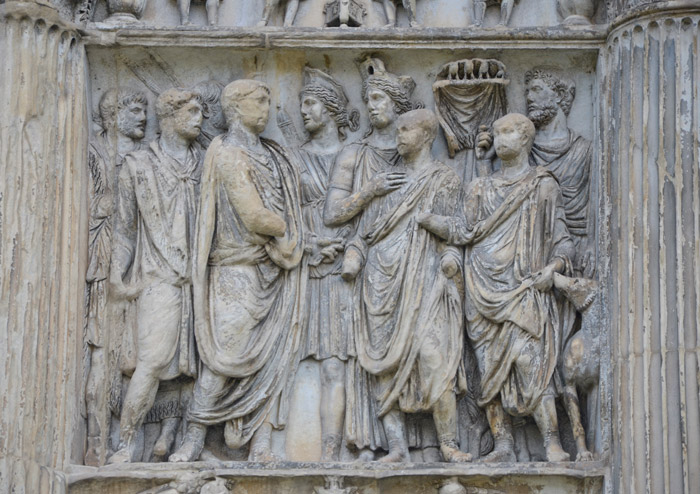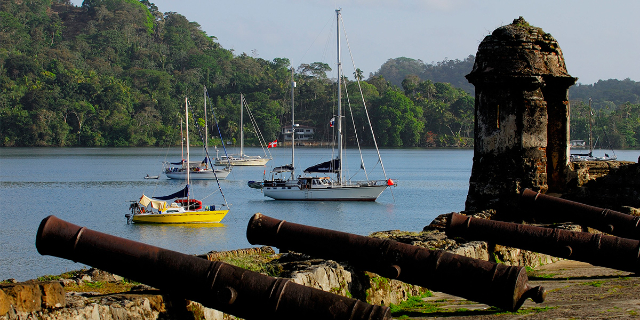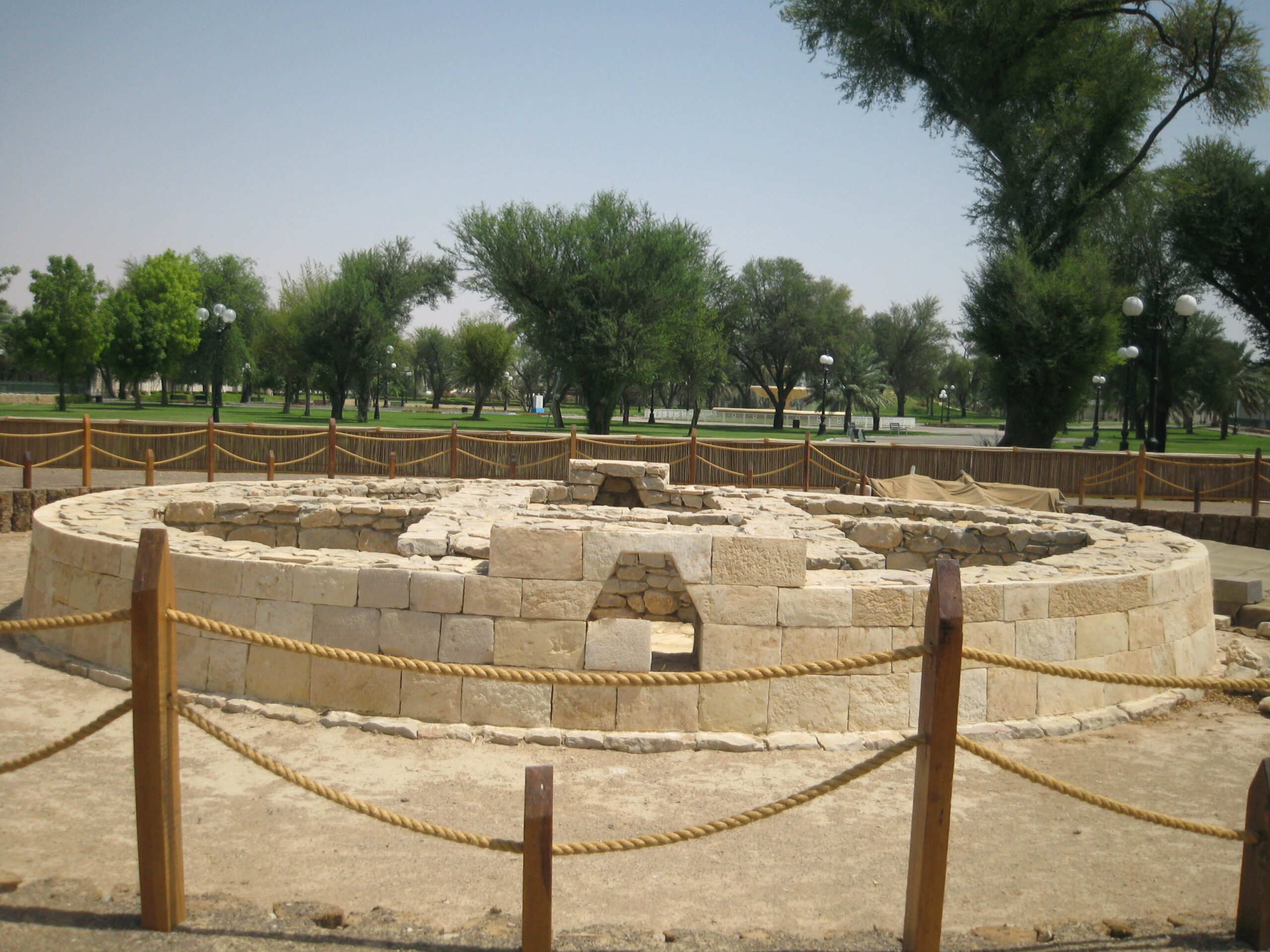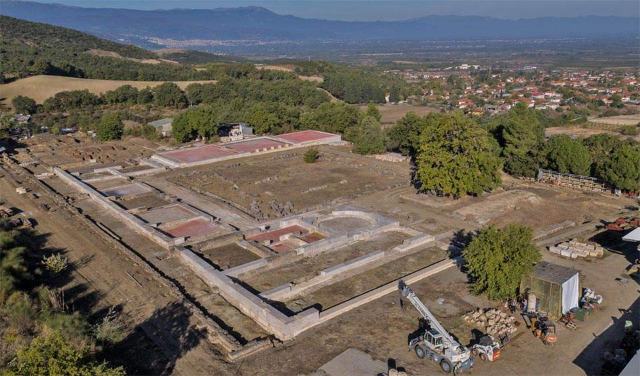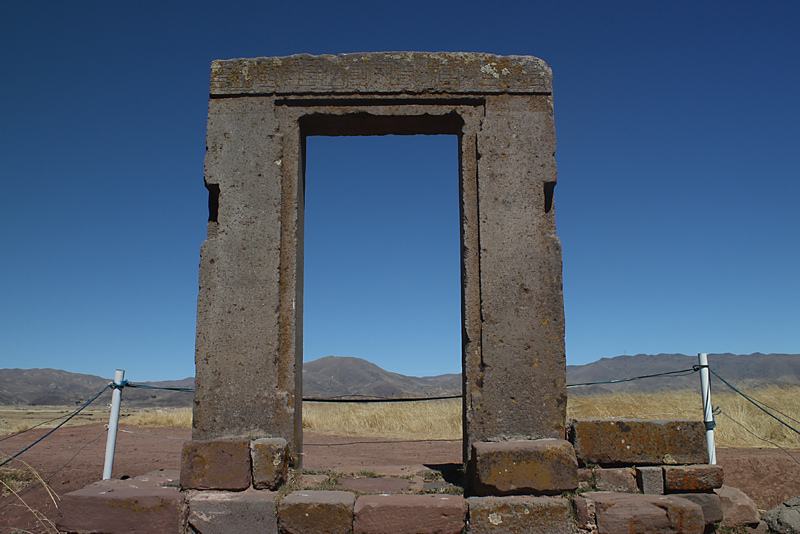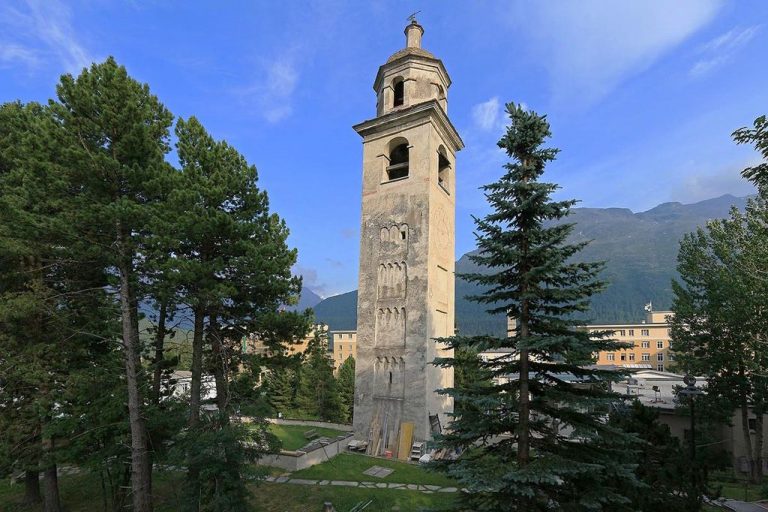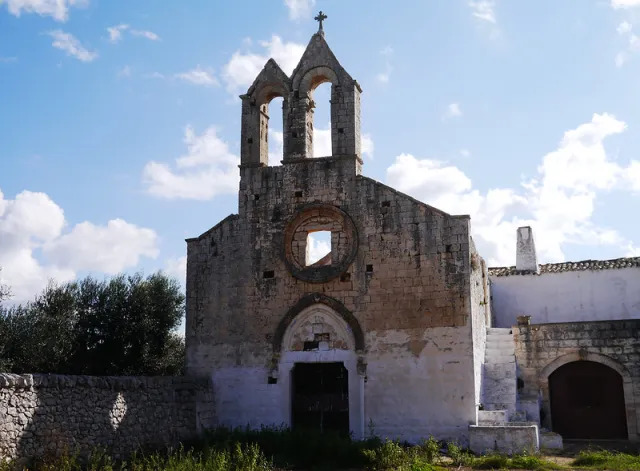The Arch of Trajan is a unique work of art. A symbol of Benevento, it represents a well-preserved testimony to Roman civilization. The date of its construction is given as 114 AD. It was built to celebrate the figure of Emperor Trajan on the occasion of the inauguration of the Appian Way, a road that connected Rome to Brindisi. Because of its grandeur, it was called the "Golden Gate" over the centuries. And Trajan is remembered as "Optimus," an enlightened prince whose fame has remained intact to this day. Dante himself placed it in Paradise as evidence of undisputed greatness.
The arch consists of a single archway 15.60 m high and 8.60 m wide. On each facade we find four half-columns, arranged at the corners of the piers, supporting an entablature. Beyond the lintels is an attic, which protrudes in the central part above the fornix, and has a space inside covered by a barrel vault. It is built of limestone blocks, covered with opus quadratum made of Parian marble blocks.
The rich sculptural decoration shows different themes on each facade: the inner facade, which looks to the city and citizens, addresses peace and providence while the outer facade, which looks to the provinces, refers to war and the emperor’s providences. The attic has a central dedicatory inscription and two bas-relief panels: the outer one contained two depictions, the one on the left was a tribute to the Agrarian Deities while the one on the right was the Deduction of Provincial Colonies. The panel on the inner side also containing two depictions, presented on the left Trajan being welcomed by the Capitoline Triad and on the right Trajan in the Forum Boarium.
The frieze of the entablature depicts the procession for Trajan’s triumph over Dacia, in very high relief.
On each pylon two other panels, placed on top of each other, still depict scenes and allegories of imperial activities. The panels are divided by lower decorative reliefs with depictions of Taurotokan victories in the center and the Amazons above.
The spandrels of the archway of the fornix depict personifications of the Danube and Mesopotamia on the outer side and Victory and Military Fidelity on the inner side, accompanied by the Genies of the Four Seasons. Other depictions are presented on the keys of the arch:Fortune on the outer side and Rome on the inner side.
The inner sides of the fornix present two large sculpted panels depicting scenes of Trajan’s activities in the city. On the left we find the Sacrifice for the inauguration of Via Traiana while on the right is carved the institution of the Alimentaria (a charitable institution started by Trajan to help the children of Roman Italy) symbolized by the loaves on the table in the center.
Finally, a depiction of the Emperor crowned by a Victory appears on the coffered vault.
Arechi I, immediately after the Lombard conquest, in the 6th century AD, incorporated it into the new city walls, making it a city gate. This new function ensured its use and, therefore, its preservation over time. Emerging unscathed even from the terrible earthquake of 1688, which destroyed many of Benevento’s monuments, the arch, in the oldest cartographic documentation, is still depicted completely incorporated into the city walls.
The first concrete intervention of isolation took place with the pontificate of Pius IX in 1854. At the end of the 19th century, the attic elevation was demolished and the missing pieces of the cornice were replaced with new shaped travertine. Later, photos from World War II show an arch completely covered with sandbags, maintained by wooden structures to protect it from bombing. In 1975, the Superintendence of Monuments of Campania carried out an intervention for static consolidation and conservative restoration of the arch. After the 1980 earthquake, on the basis of inspections, it was determined that restoration of the entire monument should be undertaken as a matter of urgency because of repeated falling fragments.
The work, carried out in several stages, culminated in 1999, with the setting up of a special scaffold so that the restoration could be followed closely and, above all, admire the reliefs that constitute an iconographic synthesis of the Emperor’s more than ten years of rule and military actions. Today, the observer who comes to Benevento for the first time and encounters this work, a symbol of the adventure of an emperor, Trajan, and a city, Rome, cannot avoid being immersed in a magical atmosphere in which the challenge with eternity finds its concretization.
(Taken from the website of the City of Benevento edited by Chiara Maria Pontillo )
